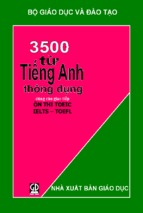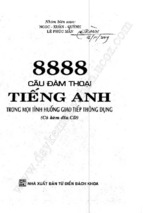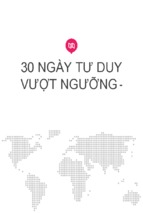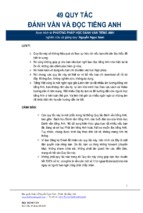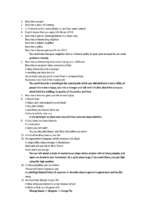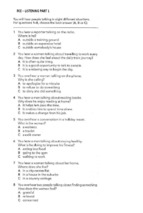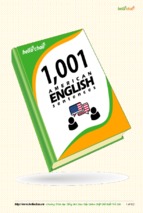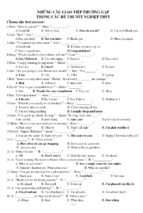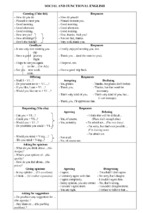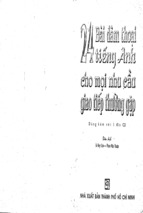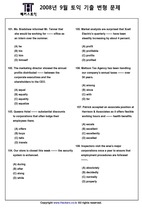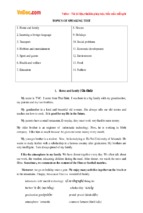Climate proofing aquaculture a case study on pangasius farming in the mekong delta, vietnam by nguyen lam an
Climate proofing aquaculture:
A case study on pangasius farming
in the Mekong Delta, Vietnam.
Nguyen Lam Anh
Thesis committee
Thesis supervisor :
Prof. Dr. J.A.J. Verreth,
Professor of Aquaculture and Fisheries
Wageningen University
Prof. Dr. R. Leemans,
Professor of Environmental Systems Analysis
Wageningen University
Prof. Dr S. de Silva,
Emeritus professor Deakin University
Thesis co-supervisor
Dr. ir. R.H. Bosma,
Project manager Aquaculture & Fisheries Group
Wageningen University
Other members
Prof. Dr. ir. R. Rabbinge - Wageningen University
Dr. F. Ludwig - Wageningen University
Dr. ir. M.P.M. Meuwissen - Wageningen University
Prof. Dr. D.C. Little - Stirling University, Scotland, UK
This research was conducted under the auspices of the graduate school:
Wageningen Institute of Animal Science (WIAS)
2
Climate proofing aquaculture:
A case study on pangasius farming
in the Mekong Delta, Vietnam.
Nguyen Lam Anh
Thesis
submitted in fulfilment of the requirements for the degree of doctor
at Wageningen University
by the authority of the Rector Magnificus
Prof. Dr. M.J. Kropff,
in the presence of the
Thesis Committee appointed by the Academic Board
to be defended in public
on Monday 15 December 2014 at 4 p.m.
in the Aula of Wageningen University.
3
Nguyen Lam Anh
Climate proofing aquaculture: A case study on pangasius farming in the Mekong
Delta, Vietnam, 138 pages.
PhD thesis, Wageningen University, Wageningen, NL (2014)
With references, and summaries in English, Dutch and Vietnamese
ISBN: 978-94-6257-221-8
4
Dedicated to my late father
5
6
Abstract
Vietnam is among the top five countries that will be most affected by sea level
rise. This study aimed to assess the subsequent impacts of flooding and
salinity intrusion on, and to evaluate suitable adaptation strategies for the
Mekong Delta's pangasius farming sector.
Water level rise and salt water intrusion for three sea level rise (SLR)
scenarios (i.e. +30cm, +50cm and +75cm) were simulated by using the
MIKE11 model. The results showed that at SLR+50, the 3m flood level would
spread downstream and threaten farms located in upstream and midstream
regions. Rising salinity for SLR+75 would reduce the appropriate timewindow for the culture in coastal areas.
A Chi-Square test and a logit regression model were employed to examine
factors which influence pangasius farmers’ perception of and adaptation to
climate change impacts. Less than half of the respondents were concerned
about climate change and actively sought suitable adaptation measures to
alleviate its impacts. The adaptive capacity of pangasius farmers can be
improved by increasing the information on climate change and introducing
early warning systems.
The technical efficiency (TE) of randomly sampled pangasius farms was
estimated using Data Envelopment Analysis, and factors affecting technical
and scale efficiency were examined with bootstrap truncated regression. The
mean TE score assuming constant return to scale was 0.66, and under variable
return to scale it was 0.84. TE of downstream farms was higher compared to
the upstream and midstream farms due to lower energy costs and stocking
once a year at a lower density, but these reduced the scale efficiency of farms
affected by salinity intrusion. Upstream and midstream farms needed to pump
water and stocked at least three times in two years. Regression analysis
showed a positive effect on TE of the farmer’s education level, and of having
experienced climate change impact through flooding or salinity intrusion in
the past.
Using a decision tree framework, this study analyzed possible options for
adapting pangasius farming to the projected climate-change impacts. Options
to adapt to salinity intrusion are: modify the pangasius farming practice by
7
using e.g. water recirculation systems, stock other species, or stock salinetolerant pangasius with support from research and extension. A breeding
program for saline-tolerant striped catfish requires long-term investments
(0.4 % of the present production costs). To adapt to worse flooding, pangasius
farms not located within the upgraded government dyke-protected areas
could raise the height of the dyke around their pangasius farm, which would
increase the total variable costs per ha for one harvest by about 0.34% in the
upstream and midstream regions, and by 0.25% in the downstream region.
8
CONTENTS
Chapter 1
General introduction
11
Chapter 2
Simulated impacts of climate change on current
farming locations of striped catfish (Pangasianodon
hypophthalmus Sauvage) in the Mekong Delta,
Vietnam
27
Chapter 3
Exploring the Climate Change Concerns of Striped
Catfish producers in the Mekong Delta, Vietnam
45
Chapter 4
Impact of climate change on the technical efficiency
of striped catfish (Pangasianodon hypophthalmus )
farming in the Mekong Delta, Vietnam
63
Chapter 5
A decision tree analysis to support potential climate
change adaptations of striped catfish farming in the
Mekong Delta, Vietnam
81
Chapter 6
General discussion
97
References
111
Summary
119
Samenvatting
125
Tóm tắt
131
Curriculum vitae
134
WIAS training and supervision plan
135
137
Acknowledgement
138
Colophon
9
10
Chapter 1
General Introduction
11
The Mekong Delta is commonly referred to as the food basket of Vietnam
in view of its contribution to the country’s production of rice, vegetables, fruits
and fish. Barange and Perry (2009) and De Silva and Soto (2009) summarized
the general impacts of climate change on fisheries and aquaculture,
respectively. They made apparent that threats are worse for the tropical and
subtropical regions, where most (i.e. 50-70%) of all aquaculture activities
occur (De Silva and Soto, 2009). Vietnam was ranked among the top five
countries most affected by rising sea levels (Dasgupta et al., 2007). Sea level
rise scenarios studies explored the impacts on Mekong Delta’s infrastructure
(Hoa et al. 2007) and rice cropping areas (Wassmann et al. 2004; Khang et al.,
2008). After rice, aquaculture is the second main farming activity of the
Mekong Delta. This study aims to assess impacts and to evaluate suitable
recommendations and strategies for the pangasius farming sector, which is,
next to shrimp the major aquaculture activity in the Mekong Delta, and indeed
of great significance in the whole of Vietnam.
1.1.Background
1.1.1. Pangasius aquaculture in the Mekong Delta, Vietnam
The Vietnamese part of the Mekong Delta covers an area of 3.9 million ha
(Wassmann et al., 2004). More than 30% area of Mekong Delta is covered by
alluvial soil, which is suitable for pangasius aquaculture. This soil is
distributed along the Hau and Tien rivers of the Mekong Delta and
concentrates in the provinces of Dong Thap, Tien Giang, An Giang, Can Thơ,
Ben Tre and Vinh Long (Department of Aquaculture, 2008).
The culture of pangasius (generic name for the two farmed catfish
species, the Pangasius bocourti and Pangasianodon hypophthalmus), started
around 1950 in the Mekong Delta, Vietnam. In the beginning, it was a smallscale aquaculture, providing food for household demands only. The pangasius
were kept in small ponds and garden canals, and later in cages in the river.
Crop residues, manure and household waste were used for feed (fertiliser).
However, since the end of 1990s the pangasius aquaculture has been growing
very fast and turned into a crop for the global market, relying mainly on
export. At the same time, seed production and the pond production intensified
due to improved feeding and artificial breeding.
12
Figure 1.1. Administrative map of the Mekong delta with the locations of the
pangasius farms in 2009 (adapted from Anh et al. 2014).
100
1000
80
800
60
600
40
400
20
200
0
1997
% Tra
Production (x1000 ton)
Pangasius production systems
1200
1999
2001
Intensive pond
2003
2005
Cage
2007
2009
Extensive pond
2011
0
% Tra
Figure 1.2. Production of pangasius in the Mekong Delta in extensive ponds, cages
and intensive ponds (left Y-axis; shaded areas). Originally, both Pangasius
bocourti (Basa) and Pangasianodon hypophthalmus (Tra) were produced,
but the share of Tra (righ Y-axis, dots) gradually increased (supplemented
from Dzung, 2008).
13
In 1997, pangasius culture in the An Giang province counted 100 cages,
with a total volume of 20 000 m3. After that, the cage culture developed also in
Dong Thap, Can Tho, Vinh Long and Tien Giang provinces and reached the
highest amount of cages in 2003 and the highest volume in 2004 with
approximately 684 000 m3. However, since 2004, the pangasius culture in
cages decreased very fast in amount and volume (Department of Aquaculture,
2008). Until 1997 the growth rate of cage culture yield was 3,2% per year,
then rapidly increased from 1997 to 2002 (143% per year), but decreased
dramatically with -65% per year between 2003 and 2007 (Figure 1.2). This
decrease had three reasons: profits in cage culture were lower than in pond
culture because of higher Feed Conversion Ratios (FCRs), more difficult
reproduction of P. bocourti, and limited options of environmental control
leading to disease out-breaks. The early pangasius production relied entirely
on the collection of fingerlings from nature to stock the cages and/or ponds.
Artificial reproduction in specialized hatcheries was first mastered for P.
hypopthalmus. The commercial significance of closing the life cycle that
followed the banning of collection of wild fry and fingerlings for aquaculture
of P. hypophthalmus, have also been highlighted (Nguyen 2009; De Silva and
Phuong, 2011). In addition, P. bocourti does not perform well in ponds.
Together, these two phenomena (i.e. increased production in ponds and
artificial reproduction in hatcheries) led to a shift in cultured species. At this
moment, P. hypopthalmus represents more than 95% of the total production
volume.
In 2007, the pangasius farming area covered approximately 6200 ha out
of a total deltaic area of 3.9 million ha (Dzung, 2008). In 2007 the pangasius
pond area was 4.2 times larger than in 1997. In the same period, the yield of
pond culture increased 29.4 times, from 23 250 tonnes to 683 567 tonnes. The
average growth rate of the production volume in the period 1997-2007 was
40% per year which was much higher than the growth of the culture area (i.e.
15.5% per year). Apparently, the pangasius production increased not only by
expanding the farm areas, but was also based on a fierce intensification of the
production process (see Phan et al., 2009; De Silva and Phuong, 2011).
At present, farming of Pangasianodon hypophthalmus (commonly referred
to as tra catfish) is the most important aquatic farming sector in Vietnam from
14
both a social and an economic point of view, accounting for approximately
60% of the overall aquaculture production. In 2012, the sector produced 1.19
million tons of fish in a pond area of 5600 ha and exported the processed
pangasius, mainly in the form of fillets, to over 142 countries with a value of
1.7 billion US$ (VASEP, 2013). The sector provides employment and income to
half a million persons of which the processing sector accounts for almost one
third. The majority of employees in the processing industry are female,
leading to their empowerment and improving households’ wellbeing (Phuong
et al., 2008). During the past five years, a shift in farm size and business model
was noticed. The farming system essentially comprised of small-scale
individual holdings, owned, operated and managed by the farmer delivering
the harvest to processing companies (Phan et al., 2009; De Silva and Phuong,
2011). However recently small farmers tend to abandon (Bush et al., 2009),
and larger pond areas tend to be integrated in large-scale farms, which are
mostly owned and operated by processing companies (De Silva and Phuong,
2011).
1.1.2. Climate change, climate variability and its influence on
aquaculture
WMO, GCOS, UNFCCC or IPCC all use different definitions for ‘climate
change’ and ‘climate variability’ (FAO, 2008). According to IPCC (2007),
UNFCCC defines climate change as solely induced by the anthropogenic
driven, while IPCC included both natural and anthropogenic drivers. Thus, the
sufficient definition of climate change can be stated: “climate change is a
change in the state of the climate that can be identified (e.g. using statistical
tests) by changes in the mean and/or the variability of its properties, and that
persists for an extended period, typically decades or longer. It refers to any
change in climate over time, whether due to natural variability or as a result of
human activity” (IPCC, 2007).
According to the Intergovernmental Panel on Climate Change (IPCC,
2007), global average surface temperature has increased 0.76°C over the last
century, and Southeast Asian countries are the region considered among the
world’ most vulnerable to climate change (ADB, 2009). Between 1951 and
2000, in Southeast Asia the mean surface air temperature increased by 0.115
0.3°C per decade, rainfall has been trending down between 1961 and 1998;
the number of rainy days have declined, and sea levels raised at the rate of 1-3
mm per year (IPCC, 2007). Nicholls et al. (1999) expressed that if no adaptive
measures are taken, a sea level rise of 37-38 cm by the 2080s could enhance
coastal flooding and increase coastal wetlands losses. According to IPCC
(2007), the frequency of extreme weather events in Southeast Asia has
increased: heat waves are more frequent (an increase in the number of hot
days and warm nights and decrease in the number of cold days and cold nights
since 1950); the number of tropical cyclones was higher during 1990-2003
than before. These extreme weather events have led to massive flooding,
landslides and droughts in many parts of the region, causing extensive damage
to property, assets and human life (ADB, 2009).
The annual average temperature in Viet Nam, increased by 0.1°C per
decade between 1900 and 2000, but during 1951-2000 it was 0.14°C per
decade, suggesting temperature rose faster in the latter half of the century.
Summers have become hotter in recent years, with average monthly
temperatures increasing 0.1-0.3°C per decade. Most regions in Viet Nam are
projected to experience an increase in temperature of 2-4ºC by 2100 (Cuong,
2008). Change of annual average rainfalls for the last nine decades (19112000) was not distinct and not consistent with each other at every location.
On average for the whole country the rainfall over the past half century (19582007) decreased by about 2% in total, while a slight increase was observed in
the south (MONRE, 2009). For the Mekong river basin, future rainfall trends
are not uniform and impacts from sea level rise may dominate the
hydrological changes (Chinvanno, 2007; TKK & START, 2009).
According to Ficke et al. (2007) the general effects of climate change on
freshwater systems are increased water temperatures and decreased
dissolved oxygen levels. Increasing temperatures can affect individual fish by
altering physiological functions, such as thermal tolerance, growth,
metabolism, food consumption, reproductive success and their ability to
maintain internal homeostasis in a variable external environment (Fry, 1971).
The consequence of changed physiological functions for aquaculture systems
is that the fish reaches a harvestable size later or requires more food to grow
them to the harvestable size in the same amount of time (Ficke et al., 2007).
16
De Silva and Soto (2009) synthesised direct and indirect impacts of
climate change on aquaculture. Direct impacts include changes in the
availability of freshwater, in temperature and in sea level, and increased
frequencies of extreme events (e.g. flooding and storm surges) that affect fish
farming. Indirect effects on aquaculture may be more important and include,
among others, economic impacts, such as cost and availability of feed;
uncertain supplies of fishmeal from capture fisheries; declining oxygen
concentrations and increased blooms of harmful algae; problems with nonnative species invasions; unsuitable local conditions in traditional rearing
areas for traditional species; competition of freshwater aquaculture activities
with changes in freshwater availability due to agricultural, industrial,
domestic and riverine requirements, as well as to changes in precipitation
regimes; and flooding of coastal land areas, mangrove and sea grass regions
which may supply seed stock for aquaculture species.
The Mekong Delta suffers from climatic change impacts through sea level
rise (1cm/year until 2100) (Grinsted et al., 2009) and reduced river flow. This
will gradually result in an increased upstream intrusion of saline water
(Handiside et al., 2007). The tidal regime and salt water intrusion are
important factors determining the potential spread of pangasius farms.
According to the Department of Aquaculture (2008), the salt water intrusion
negatively affects pangasius culture. Salinity higher than 4‰ is unsuitable for
pangasius culture. The water used for pangasius culture comes from Tien and
Hau rivers and the canal systems. The areas within 20 to 35 km from the river
mouth have a salinity of 4‰ all year and are thus unsuitable (Department of
Aquaculture, 2008). Phan et al. (2009) reported a reduced production in
catfish farms located downstream, which was attributed to diurnal changes in
salinity, albeit small. As a consequence of climate change the production area
of farming systems in the Mekong Delta might be altered and at least part of
the presently used area may become inappropriate for the culture of
pangasius (Handiside et al., 2007).
17
1.2. Problem formulation
Although a temperature increase may affect pangasius culture, the two
main factors of our concern are the water level rise and salinity intrusion
induced by sea level rise. Pangasius has a large temperature comfort zone
(Department of Aquaculture, 2008) and hence, we don’t expect that
temperature increase due to global climate change will have strong impact on
the farming industry. However, the pangasius farming industry may be
affected by increased seawater intrusion in coastal areas or by increased
flooding in upstream regions, caused by the sea level rise and exacerbated by a
reduced river flow in the dry season or increased water discharge in the rainy
season, respectively. Together these would increase salinity and water level
significantly and the farmed species might suffer from salinity stress as well as
from risks related to flooding (water levels higher than the pond dyke, or pond
dyke destruction). Therefore, the farm location and the extent to which
pangasius can adapt to brackish water or the extent to which a pond can
undergo flooding are factors that affect the decision-making process of the
farmers. The appropriate adaptive measures could be hard to select and
therefore will have to be accompanied by relevant socio-economic changes
within the farming community as well as for those servicing this farming
sector.
1.3. Thesis objective and research questions
Assuming that the Mekong Delta’s elevation does not change this century,
the delta will be subject to major climate change impacts through sea level
rise. Climate change combined with sea level rise will increase upstream
intrusion of saline water in the dry season and will enhance flooding in the
rainy season. As a consequence the production area of pangasius farms might
be altered and at least part of the presently used area might become
unsuitable for farming pangasius. Hence, the question arises whether the
pangasius farming sector in Mekong delta can cope with impacts of climate
change?
18
This study aims to estimate the impact of climate change on pangasius
farming, to assess the pangasius farmers’ capabilities to deal with potential
climate changes and to propose adaptation strategies to support farmers and
policy makers. The research questions we try to answer are:
1) Does sea level rise (and the consequent saline water intrusion and
river discharge) affect the potential area for pangasius culture?
2) How do farming communities perceive and deal with the effects of sea
level rise?
3) Is the technical efficiency of farms impacted by sea level rise?
4) Which are appropriate adaptation and/or mitigation measures?
1.4. Methodology approach
The locations that might be impacted by changes of water level and salt
intrusion, can be estimated by GIS based maps and hydrological modelling. After
assessing the perceptions of the farmers and their adaptive measures, and using
a technical efficiency analysis, this study uses a decision tree framework to
formulate recommendations on the possibilities of adaptation to climate
change.
1.4.1. GIS and GIS-linked hydrological models
In order to answer the first research question, we need a spatial explicit
model that simulates the influential dynamics of water level and salinity
intrusion process induced by sea level rise scenarios on pangasius farming
location over time. Thus, the two-step approach is applied. Firstly, the
hydrological model is employed to project the water level and the salinity
intrusion under different sea level rise scenarios. The results from first step
then will be combined with the map of pangasius farming location to estimate
the affected areas. A broadly applied GIS-linked hydrological model needs to
be considered.
According to Hennecke (2004), GIS model was used for simulating the
potential physical impacts of rising sea level on the coastal environment. In
19
- Xem thêm -


